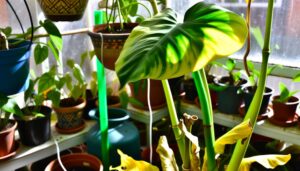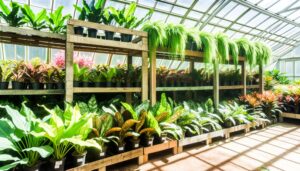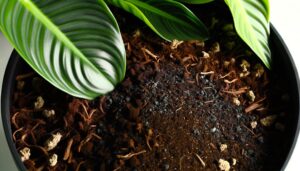What Is a Philodendron Hederaceum Imperial Red?
Philodendron hederaceum 'Imperial Red' belongs to the Araceae family and originates from the tropical rainforests of Central and South America, particularly Brazil, Colombia, and Venezuela. This plant features large, heart-shaped leaves that shift from red to burgundy as they mature, supported by robust stems.
It requires well-draining, peat-based potting mix and thrives under indirect light and moderate moisture levels. Care involves maintaining temperatures between 18-27°C, providing balanced fertilizer, and regular pruning.
Common issues include pests like spider mites and diseases such as root rot. Continue for detailed growth and care guidelines.
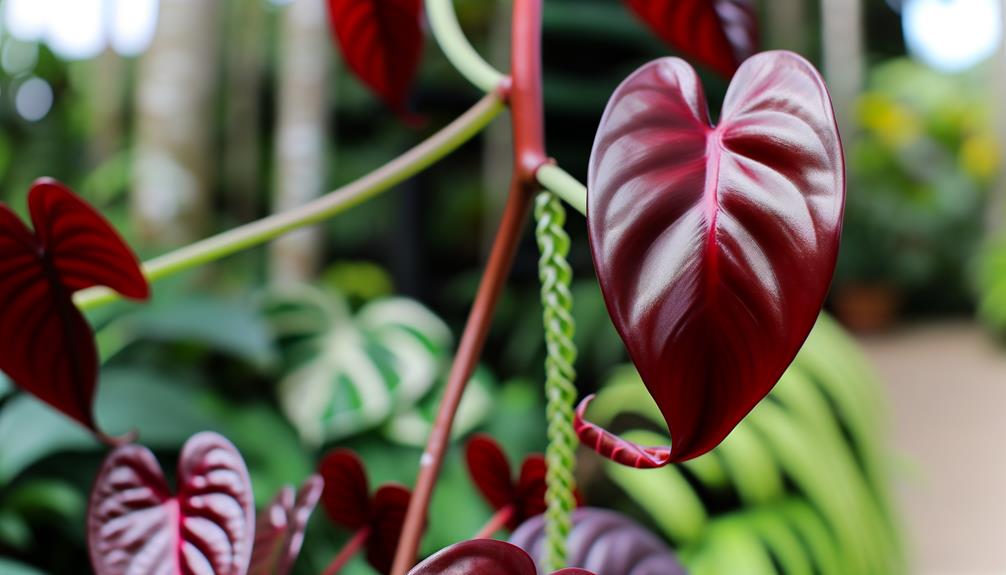
Key Takeaways
- Belongs to the Araceae family and originates from Central and South America.
- Features large, heart-shaped leaves that start red and mature to burgundy.
- Thrives in tropical rainforests and prefers indirect light conditions.
- Requires well-draining soil and moderate moisture levels.
- Common issues include pests like spider mites and fungal diseases like root rot.
Origin and Background

The Philodendron hederaceum 'Imperial Red', a cultivar of the Araceae family, originates from tropical regions of Central and South America. This species thrives in the humid, shaded understory of tropical rainforests, where it benefits from the rich, organic soil and consistent moisture levels.
The native distribution of P. hederaceum spans countries such as Brazil, Colombia, and Venezuela, where it plays a role in the ecosystem by providing habitat and support for various organisms. This cultivar has been selectively bred for its distinct foliage, which enhances its ornamental value.
The genetic lineage of P. hederaceum 'Imperial Red' is traceable to its wild relatives, showcasing the horticultural advancements that have transformed it into a popular houseplant.
Physical Characteristics
Characterized by its striking foliage, Philodendron hederaceum 'Imperial Red' features large, heart-shaped leaves that exhibit a vibrant red hue in their emergent stage, gradually darkening to a deep burgundy as they mature. This evergreen perennial displays a compact growth habit, making it a suitable choice for indoor cultivation. The leaf blades are glossy, adding a touch of elegance to its overall appearance. Stems are robust, providing structural support to the broad leaves.
| Characteristic | Description | Notes |
|---|---|---|
| Leaf Color | Red to burgundy | Changes with age |
| Leaf Shape | Heart-shaped | Symmetrical and large |
| Growth Habit | Compact and upright | Ideal for indoor settings |
This distinctive coloration and form contribute to its popularity among plant enthusiasts.
Growing Conditions
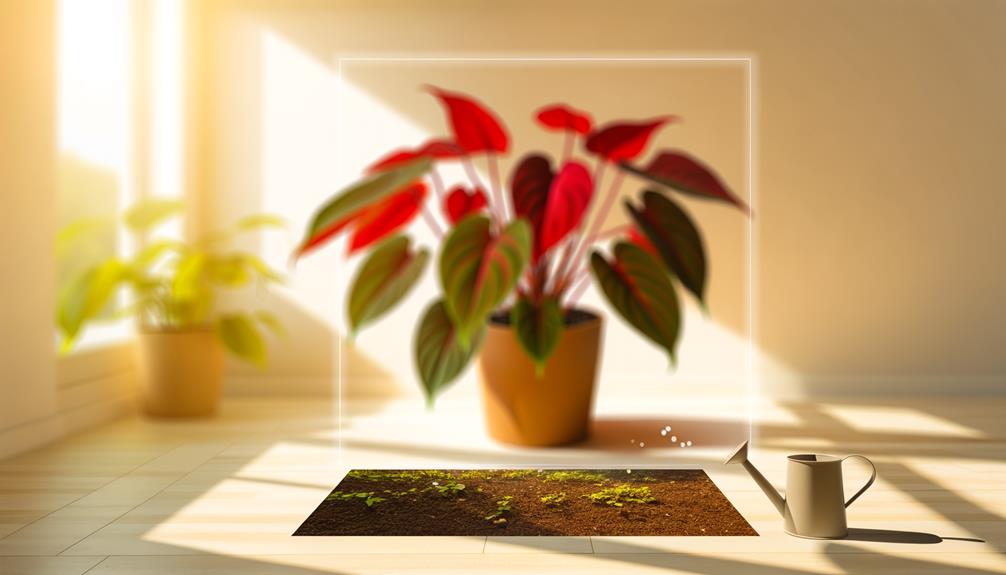
Perfect growth of Philodendron hederaceum 'Imperial Red' necessitates well-draining soil, moderate moisture, and indirect light conditions. This species flourishes in a substrate composed of peat-based potting mix, perlite, and orchid bark, which guarantees adequate aeration and prevents waterlogging.
Optimal moisture levels range between 40-60%, mimicking its native tropical habitat. Light intensity is essential; the plant thrives best under bright, indirect light, avoiding direct sunlight which can result in foliar burn.
Temperature preferences range around 18-27°C (65-80°F), aligning with general tropical plant needs. It is also crucial to maintain a stable environment free of chilly drafts and sudden temperature fluctuations. Ensuring these conditions fosters vigorous growth and vivid coloration in the Philodendron hederaceum 'Imperial Red'.
Care Tips
Proper care for Philodendron hederaceum 'Imperial Red' involves regular watering, ensuring the soil remains moist but not waterlogged, and maintaining humidity levels to support its tropical origins. This species, known for its vibrant foliage, thrives under specific conditions that mimic its natural environment.
To enhance plant health, consider the following care tips:
- Light: Provide bright, indirect light to stimulate growth while avoiding direct sunlight that may scorch the leaves.
- Soil: Utilize well-draining potting mix rich in organic matter to prevent root rot.
- Temperature: Maintain temperatures between 18-27°C (65-80°F) for the best growth.
- Fertilization: Apply a balanced, water-soluble fertilizer monthly during the growing season.
- Pruning: Regularly prune to remove dead or yellowing leaves and promote bushier growth.
Common Issues
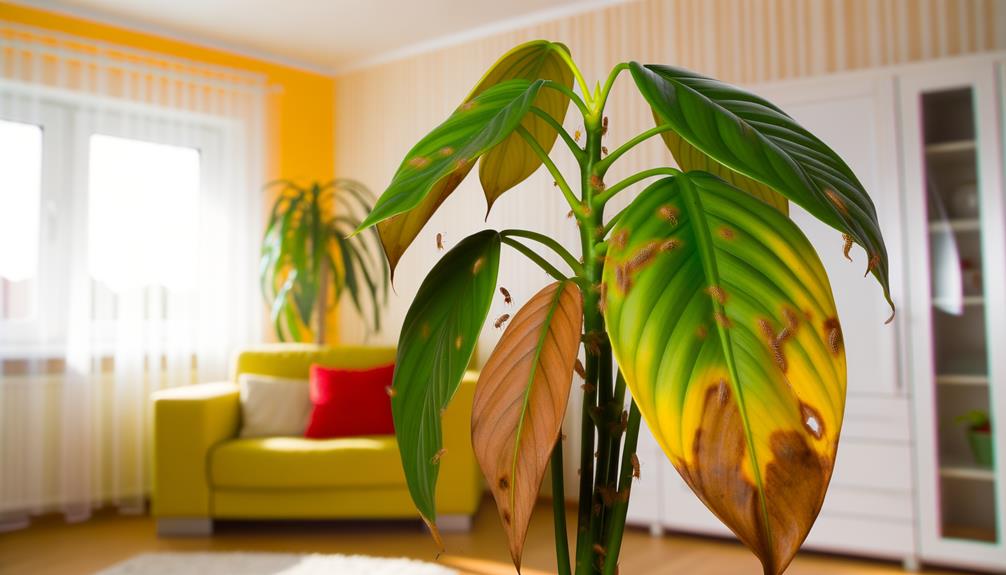
Philodendron hederaceum 'Imperial Red' may encounter several common issues, including pest infestations, fungal diseases, and nutrient deficiencies, that can compromise its health and growth.
Common pests such as *Spider mites* (Tetranychidae), *Mealybugs* (Pseudococcidae), and *Aphids* (Aphididae) can cause significant damage by sucking plant sap, leading to chlorosis and stunted growth.
Fungal diseases, including root rot caused by *Pythium* spp. and leaf spot diseases from *Phyllosticta* spp., can result from overwatering and poor air circulation.
Nutrient deficiencies, particularly of nitrogen (N), phosphorus (P), and potassium (K), manifest as yellowing leaves, poor vigor, and reduced leaf size.
Regular monitoring, appropriate cultural practices, and timely interventions are essential to maintain the plant's best health.
Conclusion
Philodendron hederaceum 'Imperial Red' is a captivating cultivar recognized for its vibrant, reddish-bronze foliage and robust growth habits. Originating from tropical regions, it thrives in well-draining soil with high humidity and indirect sunlight. Regular pruning and proper watering are essential to prevent common issues such as root rot.
Notably, this species can grow up to 3-6 feet in height, making it a substantial addition to any indoor plant collection. This growth potential underscores its popularity among horticultural enthusiasts.

